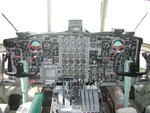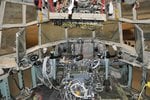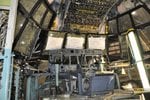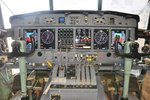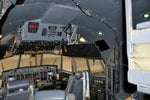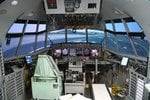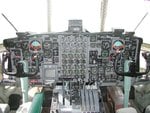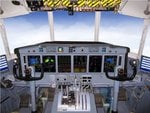Navigation
Install the app
How to install the app on iOS
Follow along with the video below to see how to install our site as a web app on your home screen.
Note: This feature may not be available in some browsers.
More options
You are using an out of date browser. It may not display this or other websites correctly.
You should upgrade or use an alternative browser.
You should upgrade or use an alternative browser.
How a Glass Cockpit is Born
- Thread starter krieghund
- Start date
Ad: This forum contains affiliate links to products on Amazon and eBay. More information in Terms and rules
More options
Who Replied?Colin1
Senior Master Sergeant
Nice indeed
any chance you could knock me one up for my Jane's WWII Fighters sim?
Oh, and how much?
any chance you could knock me one up for my Jane's WWII Fighters sim?
Oh, and how much?
Crimea_River
Marshal
Nice to have a job you enjoy and like to share with others.
Unlike me....
Unlike me....
- Thread starter
- #4
Nice indeed
any chance you could knock me one up for my Jane's WWII Fighters sim?
Oh, and how much?
Between 7 and 10 mill per cockpit, full CNS/ATM compliant and Hamilton electronic propeller control system.
The extras are 3 EFB's, dual CMA-9000 FMS with CAT III cert GPS,Dual Laseref V, the only C-130's to have an EVS plus Windshear WXR, T2CA, , NVIS, CPDLC -- namely the works
Last edited:
vikingBerserker
Lieutenant General
Man, that is so cool!
T Bolt
Colonel
VERY cool! Makes mine look kinda sad. 

RabidAlien
1st Lieutenant
7 Mil? Hang on, lemme check my wallet......
FLYBOYJ
"THE GREAT GAZOO"
Very cool!
It looks like the Flight Engineer was fired!
It looks like the Flight Engineer was fired!
Matt308
Glock Perfection
In Saudi Arabia? For whom?
- Thread starter
- #10
In Saudi Arabia? For whom?
For the RSAF they have 50 in the inventory including a handful of civil registered L-100s which made the design very challenging as all aircraft required the same configuration. This configuration is fully FAA/GACA compliant.
Wildcat
Major
Very interesting. What are the benefits of having a glass cockpit over an analog one?
- Thread starter
- #12
Very interesting. What are the benefits of having a glass cockpit over an analog one?
To provide full CNS/ATM compliance say to penetrate European airspace the analog instruments can not display the required nav data and another set of displays has to be added for both TCAS and TAWS. The instrument panel is already very crowded. The pilots workload is pretty high in this cockpit in the picture.
Also the glass adds the all important Engine Instrument Caution Advisory System (EICAS). With the old instrument panel the aircrew had to constantly scan the gauges periodically to spot potential trouble. As the flight is long and crew fatigue sets in a problem can go unnoticed until the Master Caution light comes on but by then corrective action may be too late.
With the EICAS, all the represented indications have limits defined for them (yellow-orange-red for severity)and as a threshold is reached that particular indicator will alert the crew who will then consult their emergency checklist and diagnostic tree via their Electronic Flight Bag (EFB).
Also on the Nav Displays the WXR, TAWS and TCAS with the NAV Map for the FMS can be displayed for real time situational awareness and the appropriate caution warnings are present for each respective system function.
Another feature present in this particular configuration is the Enhanced Vision System (EVS). It provides a realtime forward looking Infrared picture to a Nav Display or onto a EFB. This is critical when flying in the bad weather in Europe. It will provide a reasonable clear picture ahead when there is nothing but soup out the windscreen. This is a great benefit when the on board systems and pilots are trained to CAT III approaches.
Hope that helps
Attachments
Last edited:
davparlr
Senior Master Sergeant
To provide full CNS/ATM compliance say to penetrate European airspace the analog instruments can not display the required nav data and another set of displays has to be added for both TCAS and TAWS. The instrument panel is already very crowded. The pilots workload is pretty high in this cockpit in the picture.
Very important
Also the glass adds the all important Engine Instrument Caution Advisory System (EICAS). With the old instrument panel the aircrew had to constantly scan the gauges periodically to spot potential trouble. As the flight is long and crew fatigue sets in a problem can go unnoticed until the Master Caution light comes on but by then corrective action may be too late.
Not so important. It is relatively easy to spot noncompliant engine gages on a bank of analog gages. In fact, most EICAS displays mimic analog engine instruments, only a bit more effectively.
consult their emergency checklist and diagnostic tree via their Electronic Flight Bag (EFB).
Something that cannot be done with old style instruments.
Also on the Nav Displays the WXR, TAWS and TCAS with the NAV Map for the FMS can be displayed for real time situational awareness and the appropriate caution warnings are present for each respective system function.
Very important for crew workload.
Another feature present in this particular configuration is the Enhanced Vision System (EVS). It provides a realtime forward looking Infrared picture to a Nav Display or onto a EFB. This is critical when flying in the bad weather in Europe. It will provide a reasonable clear picture ahead when there is nothing but soup out the windscreen. This is a great benefit when the on board systems and pilots are trained to CAT III approaches.
I didn't see a head-up-display (HUD), but I it would almost be a necessity for Cat III.
Also, some more advantages. Reliability, solid state displays are more reliable (better mean time between failure) than mechanical and require fewer components. Also, a glass cockpit allows upgrades with a minimum of effort. Old style cockpits typically require adding components when added capability is provided, whereas a glass cockpit only requires another "million dollar" software upgrade
The B-2 cockpit, a 30 year old design, was one of the first, if not the first, fully integrated military cockpit. Compared to the latest cockpits, it is still very busy, but it took the four man B-1 mission and made it into a two man mission. Unlike civilian and airlift cockpits, it also incorporates attack sensors, weapons control and defensive management systems. Most of the clutter is hardware required to operate with total loss of the avionics system. Military simulation evaluations during design reviews showed a low workload.
Attachments
Matt308
Glock Perfection
I didnt realize that Saudi had 50. Now I see the return on investment.
Wildcat
Major
Excellent, Thanks for the heads up guys.
Cool stuff!
CharlesBronson
Senior Master Sergeant
The cost of that electronics is frightening , if you modernize today you expend the same money as with a new aircraft 15 or 20 years ago.
Matt308
Glock Perfection
EFBs would be cheaper and get you a significant benefit for the money. Not a full avionics suite, but EFBs and enhanced/synthetic vision would be leaps and bounds more economical for such an airframe. Those are H models, right?
- Thread starter
- #20
EFBs would be cheaper and get you a significant benefit for the money. Not a full avionics suite, but EFBs and enhanced/synthetic vision would be leaps and bounds more economical for such an airframe. Those are H models, right?
Yes three types modified, H, H-30 L100-30.
The EFB's bring an unmeasurable benefit to the cockpit, for example at the nav station the MCDU for the INS and the radar repeater scope are gone with the EFB replicating the MCDU for the FMS with co-pilot authority acknowledgment (civil requirement) on his MCDU. The EFB will also repeat the Nav and EIDS displays from the instrument panel (the Honeywell radar being displayed there) The EFB is also WIFI so Jeppesen updates can be made when at any airport providing that service.
The cockpit is totally compliant for GATM out to 2030, the only thing lacking is the HUD but the aircraft are configured for retrofit. A HUD system is over $1M per cockpit and it was decided to invest into the Hamilton-Electronic Propeller Control System.
I have go into the sandbox tomorrow to accept the next two completed aircraft, by the end of the year we should have 8 out the door from contract start Oct 2008. Let's see Boeing's AMP has 3? when did it start (2002?) and how much does it cost$$$$? That's what happens when a company is so big it can't get out of its own way.
Users who are viewing this thread
Total: 1 (members: 0, guests: 1)

